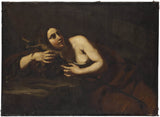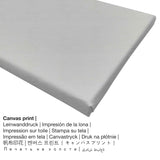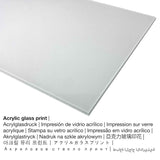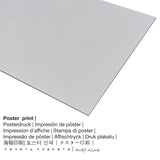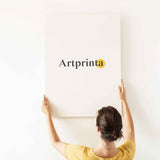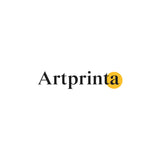Cecco del Caravaggio - The Penitent Magdalen - ọmarịcha nka
Ụtụ gụnyere. Mbupu gbakọrọ na ndenye ọpụpụ.
General specifications by Nationalmuseum Stockholm (© - Nationalmuseum Stockholm - www.nationalmuseum.se)
English: An apprentice to Caravaggio, Cecco was among the first wave of followers and remained close to the master even after his flight from Rome in 1606. Caravaggio’s influence is evident in this portrayal of Mary Magdalene as a penitent, meditating on Christ’s Passion in her solitary mountain retreat near Sainte-Baume in Provence. According to legend, the saint spent thirty years as a hermit, having abandoned her previous life of prostitution. According to the Gospels, she approached Jesus, who was a guest at the house of Simon the Pharisee, to ask forgiveness for her sins. She washed his feet with her tears, dried them with her hair, and anointed them with myrrh, an incident that foreshadowed his death. Cecco’s melancholy saint embraces the crucifix, her eyes overflowing with tears, and through her intensive gaze she commands pictorial space. Her gesture indicates acceptance of suffering to atone for her sins and willingness to follow Jesus. The image tends toward Caravaggesque simplification, using the typical oblique shaft of light, dark ground, strong chiaroscuro contrasts, and subtle chromatic harmonies. The crisp definition of the inanimate objects, such as the delicate glass jar that reflects the light from a studio window, is beautifully contrasted with the saint’s vibrant flesh tones. Cecco var elev till Caravaggio och en av mästarens första adepter som stod honom nära även efter flykten från Rom år 1606. Caravaggios inflytande avspeglas tydligt i målningen av Maria Magdalena som botfärdig synderska begrundande Kristi passion i sin ensliga tillflyktsort i närheten av Sainte-Baume i Provence. Enligt legenden levde hon där under trettio år som eremit, efter att ha lämnat sitt forna liv som prostituerad bakom sig. I Bibeln berättas att Magdalena bad Jesus om syndernas förlåtelse då han gästade Simon fariséns hus. Hon tvättade hans fötter med sina tårar, torkade dem med sitt hår och smörjde dem med myrra, en händelse som ansågs förebåda Kristi passion. Ceccos melankoliska helgon omfamnar krucifixet med ögon fyllda av tårar och med blickens intensitet behärskar hon bildrummet. Hennes gest vittnar om viljan att underkasta sig lidande för att sona sina synder och följa Jesu exempel. Ceccos gestaltning med dess snett ovanifrån infallande ljusstråle, mörka bakgrund, skarpa kontraster mellan skuggor och dagrar, och dämpade färgskala, närmar sig caravaggismens förenkling av helgonbilden. Föremålens skarpare definition – det sköra glaset som speglar ateljéfönstrets ljus – står i kontrast till helgonets känsligt modellerade hud.
The piece of art was created by Cecco del Caravaggio. The masterpiece was made with the size Ogologo: 99 cm (38,9 ″); Ogologo: 135 cm (53,1 ″) ma were ihe osise ese Usoro of mmanụ na kwaaji. Furthermore, the artpiece is in the the Nationalmuseum Stockholm's art collection, which is Sweden's museum of art and design, a Swedish government authority with a mandatet o preserve cultural heritage and promote art, interest in art and knowledge of art. We are glad to state that the artwork, which belongs to the public domain is being included with courtesy of Nationalmuseum Stockholm na Wikimedia Commons.: . Moreover, alignment of the digital reproduction is in landscape format and has a side ratio of 4 : 3, which means that ogologo bụ 33% ogologo karịa obosara. The painter Cecco del Caravaggio was a European artist from Italy, whose art style can primarily be attributed to Baroque. The artist lived for 100 afọ, amuru na afo 1580 ma nwụọ na 1680.
Họrọ ụdị ihe onwunwe gị
Maka ngwaahịa ọ bụla anyị na-enye nha & ihe dị iche iche. Họrọ n'ime nhọrọ ngwaahịa ndị a ugbu a ka ị kwekọọ na mmasị gị na nha na akụrụngwa:
- Mbipụta enyo acrylic: The acrylic glass print, which is sometimes described as a UV print on plexiglass, changes the original work of art into beautiful wall décor and offers a viable alternative option to aluminium or canvas fine art replicas. The work of art is being made with the help of modern UV direct print technology. This creates stunning, intense colors. The real glass coating protects your custom art print against sunlight and external influences for many years.
- Mpempe akwụkwọ ederede (akwa akwa akwa): Our poster print is a printed cotton canvas paper with a nice structure on the surface. Please bear in mind, that depending on the size of the canvas poster print we add a white margin of something between 2-6cm around the work of art, which facilitates the framing with your custom frame.
- Mbipụta nke aluminom: An Aluminium Dibond print is a print with an impressive depth effect. The Aluminium Dibond Print is your excellent introduction to the sophisticated world of fine art replicas manufactured on aluminum. For our Print On Aluminum Dibond, we print your work of art onto the aluminium surface. Colors are vivid and luminous in the highest definition, details of the print appear clear and crisp.
- Mbipụta kwaaji: A canvas print, which shall not be mistaken with a painting on a canvas, is a digital replica applied on a cotton canvas fabric. It has a typical look of three dimensionality. Canvas Prints have the advantage of being low in weight, which means that it is easy to hang your Canvas print without the help of any wall-mounts. A canvas print is suitable for any kind of wall.
Ozi ndabere izugbe gbasara onye na-ese ihe
| Aha onye nka: | Cecco del Caravaggio |
| A makwaara dịka: | Cecco del Caravaggio, Checcho di Michelangelo, Boneri Francesco, Buoneri Francesco, Del Caravaggio Cecco, Checco del Caravaggio, Cecco del Caravaggio Buoneri Francesco, Francesco Buoneri, Checco di Michelangelo, Cecco del Caravaggio Francesco Boneri, Cecco del Carauaggio, Checco da Caravaggio, Checho di Michelangelo, Francesco Boneri, Caravaggio Cecco del, Francesco Boneri Cecco del Caravaggio |
| okike onye nka: | nwoke |
| Obodo onye nka: | Italian |
| Ọrụ onye na-ese ihe: | onye na-ese ihe |
| Obodo obibi: | Italy |
| styles: | Baroque |
| Akwụsị: | 100 afọ |
| A mụrụ: | 1580 |
| Afọ ọnwụ: | 1680 |
Ozi nka ahaziri
| Aha nke ihe nka: | "The Penitet Magdalen" |
| Nhazi nke ọrụ nka: | sere |
| Usoro izizi: | mmanụ na kwaaji |
| Nha izizi (ọrụ nka): | Ogologo: 99 cm (38,9 ″); Ogologo: 135 cm (53,1 ″) |
| Ụlọ ihe ngosi nka / mkpokọta: | National Museum nke Stockholm |
| Ebe ngosi nka: | Stockholm, Obodo Stockholm, Sweden |
| Weebụsaịtị ihe ngosi nka: | National Museum nke Stockholm |
| Akwụkwọ ikike nka: | ngalaba ọha |
| Site n'aka: | Nationalmuseum Stockholm na Wikimedia Commons |
data ndabere ngwaahịa
| Ụdị edemede: | ọrụ mgbidi |
| Usoro mmeputakwa: | dijitalụ mmeputakwa |
| Usoro mmepụta: | Mbipụta UV ozugbo (mbipụta dijitalụ) |
| Mmalite nke ngwaahịa a: | emere na Germany |
| Ụdị ngwaahịa: | a na-achọ |
| Ngwaahịa were: | mkpokọta nka (mmeputakwa), nka mgbidi |
| Ndepụta: | nhazi odida obodo |
| Ụdị anya: | 4: 3 (ogologo: obosara) |
| Nsonaazụ: | ogologo bụ 33% ogologo karịa obosara |
| Nhọrọ ihe dị: | Mbipụta iko acrylic (nwere ezigbo mkpuchi iko), mbipụta ọla (aluminium dibond), mbipụta akwa akwa, mbipụta akwụkwọ mmado (akwụkwọ kwaaji) |
| Nhọrọ nke Canvas Mbipụta (akwa akwa na etiti ihe ndọtị): | 40x30cm - 16x12", 80x60cm - 31x24", 120x90cm - 47x35", 160x120cm - 63x47" |
| Mbipụta iko acrylic (nwere ezigbo mkpuchi iko) nhọrọ nha: | 40x30cm - 16x12", 80x60cm - 31x24", 120x90cm - 47x35", 160x120cm - 63x47" |
| Mbipụta akwụkwọ mmado (akwụkwọ kwaaji): | 40x30cm - 16x12", 80x60cm - 31x24", 120x90cm - 47x35" |
| Nhọrọ Dibond (ihe alumnium) nhọrọ: | 40x30cm - 16x12", 80x60cm - 31x24", 120x90cm - 47x35" |
| Nhazi nke nnomi nka: | biko buru n'uche na mmeputakwa a enweghi okpokolo agba |
Legal disclaimer: We try everythig possible to describe our art products as exact as we can and to exhibit them visually. Please keep in mind that the colors of the print materials, as well as the imprint might differ to a certain extent from the presentation on your monitor. Depending on your screen settings and the condition of the surface, not all colors are printed 100% realistically. In view of the fact that all the art prints are printed and processed manually, there might as well be slight discrepancies in the exact position and the size of the motif.
Edobere ederede a site na nwebisiinka © , Artprinta.com

